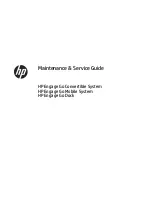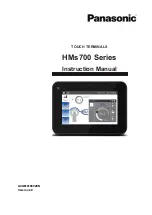
CHAPTER FIVE - CONECTIVITY
72
Note
that a right profile in the ‘Edit Profile’ field is selected before you begin.
•
Client Name:
This parameter is odd one in this context. The SCU
uses it internally. If you want to give a name to the client of the
ThirdPartyConfig profile or to the client of some other profile, you can
enter it in this field, and you will find the name in use on the Status
property page.
•
Power Save:
The point of this property is to tell the driver of the
WLAN radio how to consume power – or, to put it another way, how to
save battery energy. Be aware that the selected power mode is a
trade-off between WLAN throughput and power consumption. The
power Save can have the following values: ‘CAM’, ‘Maximum’, and
‘Fast’.
CAM (Constant Awake Mode): In this mode the radio’s transceiver is
always on, that is, there is no power management in use in the WLAN
adapter. Even if you were looking for the best WLAN throughput, the
CAM setting can be hardly recommended because the power
consumption of the WLAN adapter is significant in this mode.
Maximum: Maximum means that power-saving is maximized. This
mode is suitable, if your data or other traffic over the wireless link is
not sensitive to variability in delays.
Fast: If you look for something that is optimized between the power
consumption and the WLAN throughput, in that case the ‘Fast’ is a
selection. It is a factory default, and it can be recommended in most
cases.
•
Tx Power:
If you need to reduce the radio’s transmitting power on
your PL3000, you may use this parameter. By default, the transmitting
power is set to ‘Maximum’. Be aware that the ‘CCX features’ setting on
the Global property page affects the ‘Tx Power’ property. If the ‘CCX
features’ is set to ‘Full’ on your PL3000, the WLAN driver expects that
your access point(s) controls the transmitting power of the WLAN
adapter on your PL3000, - or, to be more precise, the transmitting
power is controlled from the direction of your AP(s).
•
Bit Rate:
If, for some reason, you need to fix speed on your WLAN
connectivity with some particular transmit rate, this parameter makes it
possible to do that on your PL3000. Otherwise, the default value being
‘Auto’ should work OK.
•
Radio Mode:
This parameter with its values refers to the speeds at
which your WLAN connectivity would operate. In other words, the
Radio Mode defines the connectivity types that your WLAN
communication can use.
BG rates full: By default your PL3000 is able to communicate both the
802.11b and the 802.11g rates, which is a good starting point for the
WLAN connectivity.
B rates only: If your access point operates only in 802.11b mode, the
‘BG rates full’ should work as well but you may prefer this value in
that case.
















































